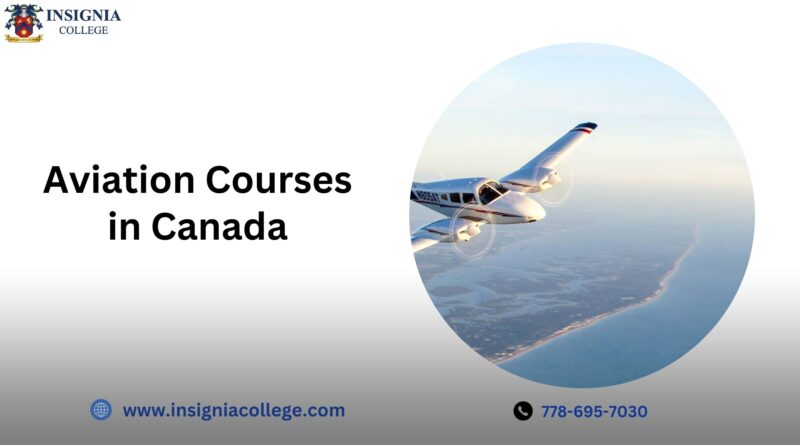7 Steps- How to Enroll in the Best Pilot Course in Canada?
Enrolling in the best pilot course in Canada is an exciting step towards a rewarding aviation career. Canada offers numerous prestigious flight schools and comprehensive training programs, providing excellent opportunities for aspiring pilots. This step-by-step guide will help you navigate the enrollment process, ensuring that you meet all requirements and make informed decisions. From researching schools to securing financial aid, we’ve got you covered. Follow these steps to kickstart your journey into the skies with the top pilot course in Canada.
 1. Ignite Your Passion: Understanding Pilot Licenses
1. Ignite Your Passion: Understanding Pilot Licenses
Canada’s Civil Aviation Regulations (CARs) categorize pilot licenses based on experience and flying privileges. Here’s a breakdown of the most common starting points:
- Private Pilot License (PPL): This foundational license allows you to fly single-engine airplanes for personal purposes. It’s the stepping stone for further aviation careers.
- Recreational Pilot Permit (RPP): This permit offers a more affordable entry point for recreational flying with limitations on distance and passenger carriage.
Carefully consider your goals. If you envision a commercial flying career, a PPL is the recommended path. For leisure flying, an RPP might suffice.
2. Age and Medical Requirements
- Minimum Age: You must be at least 16 years old to solo a glider and 17 years old to solo a powered aircraft in Canada. The minimum age for obtaining a PPL is 18.
- Medical Fitness: Transport Canada mandates medical examinations. The category required depends on the license you seek (Category 3 for PPL, Category 1 for Commercial Pilot License).
3. Researching Pilot Courses in Canada
With numerous flight schools scattered across Canada, choosing the right one is vital. Here are some key factors to consider:
- Location: Convenience and access to training facilities are crucial. Consider schools near your residence or ones offering relocation assistance.
- Flight Training Fleet: Ensure the school has a well-maintained fleet of aircraft suitable for your chosen license (e.g., single-engine Cessna for PPL).
- Instructor Qualifications: Seek schools with experienced and Transport Canada-approved flight instructors who prioritize safety and effective teaching methods.
- Course Structure: Research the curriculum, including ground school hours, flight time requirements, and simulator training availability.
- Cost and Financial Aid: Pilot training can be expensive. Compare costs, including aircraft rental fees, and explore potential scholarships or financial aid programs.
- Student Reviews and Reputation: Read online reviews from past students and research the school’s reputation within the aviation community.
4. Contacting Flight Schools and Scheduling Introductory Flights
Once you’ve shortlisted potential schools, reach out to them directly. Inquire about their programs, pricing, and instructor availability. Many schools offer introductory flights, allowing you to experience the thrill of flying firsthand and assess the school’s training environment.
5. The Application Process
The application process typically involves submitting documentation like proof of age, medical certificate, and educational background (if required). Flight schools might also conduct entrance exams or interviews to assess your aptitude and suitability for pilot training.
6. Funding Your Pilot Course
Pilot training requires a significant investment. Explore various financing options such as personal savings, student loans tailored for flight training, or scholarships offered by flight schools or aviation associations.
7. Embrace the Journey: Dedication and Focus
Pilot training is a demanding but rewarding experience. Be prepared for dedicated studying, regular flight practice, and a strong commitment to mastering the necessary skills and knowledge.
Taking Flight: Your Canadian Pilot Course Awaits
By following these steps, you’ll be well-equipped to select the best pilot course in Canada and embark on your exciting aviation journey. Remember, passion, dedication, and the right training program are the cornerstones of a successful pilot career. So, spread your wings and get ready to soar!
Completing the best pilot course in Canada is a significant achievement that opens the door to a thrilling aviation career. By understanding the different licenses, meeting the age and medical requirements, researching and selecting the right flight school, and securing necessary funding, you’re well on your way to becoming a skilled pilot. Remember, this journey requires dedication, focus, and a passion for flying. Embrace the challenges and enjoy the rewards of mastering the skies. With the right preparation and mindset, you’ll soon be navigating the clouds, turning your dreams into reality.

